Interfaith Dialogue Through Travel Literature

Travel literature whether inspired by pleasure, pilgrimage, official duty, geographical exploration or profit emerges as a prominent genre in virtually all times and cultures. Travel narratives mediate between fact and fiction, autobiography and ethnography, combining a number of academic disciplines, literary categories and social codes. They also raise issues concerning power and self- perception, cultural representation as well as imagination.
Travel literature is travel writing considered to have value as literature. Travel literature typically records the people, events, sights and feelings of an author who is touring a foreign place for the pleasure of travel. An individual work is sometimes called a travelogue or itinerary.
To be called literature the work must have a coherent narrative, or insights and value, beyond a mere logging of dates and events, such as diary or ship's log. Literature that recounts adventure, exploration and conquest is often grouped under travel literature, but it also has its own genre outdoor literature; these genres will often overlap with no definite boundaries.
Travel literature is a popular genre of published work today. However, it is rarely a dispassionate and scientific recording of conditions in other lands. As a literary genre, it has certain conventions. Readers are generally seeking the exotic, the other, the different in the places they explore in literary mode.
Travel literature may be cross-cultural or transnational in focus, or may involve travel to different regions within the same country.
On travel and related literature, the famed American author Mark Twain writes in his book entitled “The Innocents Abroad”: [i]
“But we love the Old Travelers. We love to hear them prate and drivel and lie. We can tell them the moment we see them. They always throw out a few feelers: they never cast themselves adrift till they have sounded every individual and know that he has not traveled. Then they open their throttle-valves, and how they do brag, and sneer, and swell, and soar, and blaspheme the sacred name of Truth! Their central idea, their grand aim, is to subjugate you, keep you down, make you feel insignificant and humble in the blaze of their cosmopolitan glory! They will not let you know anything. They sneer at your most inoffensive suggestions; they laugh unfeelingly at your treasured dreams of foreign lands; they brand the statements of your traveled aunts and uncles as the stupidest absurdities; […] But still I love the Old Travelers. I love them for their witless platitudes; for their supernatural ability to bore; for their delightful asinine vanity; for their luxuriant fertility of imagination; for their startling, their brilliant, their overwhelming mendacity!”
The Role of Travel Literature in Intercultural Dialogue
If we are to believe the major myths and tales, travel is part of the human adventure. Whether man embarks for good or toward a promised land (Abraham or Moses), experiences numerous tribulations before returning to his point of origin (Ulysses), takes to the road to seek wisdom through multiple encounters (Buddha) or goes off to discover terra incognita (Christopher Columbus or Marco Polo), he enriches his perception of the world. In an era when travel is part of our daily life.
Maybe one of the best illustrations of applied intercultural dialogue is travel literature, for over centuries people have moved from one geographical location to another for work, education, trade, diplomacy, leisure and have come in interaction with other people of different color, culture or creed. These interactions occur in different ways, they can be violent and disruptive or peaceful and amicable, and obviously when we talk about violence we do not mean occupation or conquest but merely erroneous cultural approach resulting from lack of communication due to preconceived ideas. The truth of the matter is that humans build far too many walls around them and too few bridges to meet. Is it fear? Is it superiority? Is it hatred? Or is it all these things put together? Actually there is no ready-made answer but a multitude of scenarios…
In this regard, by undertaking research on travel literature, culture experts aim at advancing cultural exchange in the field of literature and translation through multilateral cooperation encompassing policy research and analysis, publications, translator training and skills development, joint participation in international book fairs, literature festivals and other forums, organization of larger-scale projects, as well as conferences, seminars and workshops.
The Major Objectives of Their Efforts Can Be Summed Up in the Following:
- dialogue through encouraging travel literature and its translation;
- improve access to lesser-known travel literature, particularly those written in the less widely-used languages and those underrepresented in the international arena;
- encourage greater diversity in international literary events and in the publishing of literature for all age groups;
- develop innovative approaches to literary creation, promotion, support for translation and training of literary translators working in less widely-used languages;
- act as a catalyst for new multilateral contacts, collaborations and innovative projects bringing travel literature into interaction with other art-forms and exploring the social and political role of writing;
- stimulate debate on relevant intercultural issues; and
- create opportunities for the exchange of ideas, transfer of skills and knowledge, and sharing of experiences and resources amongst organizations and institutions in order to encourage intercultural dialogue and communication in the best ways possible.
Renowned Travelers From the Muslim to the non-Muslim World and the West
14th Century
- Ibn Battuta (1304 – 1368 or 1369), [ii] Moroccan world traveler [iii]
Rihla (1355) — literally entitled: "A Gift to Those Who Contemplate the Wonders of Cities and the Marvels of Traveling".
Ibn Battuta [iv] was the only medieval traveler who is known to have visited the lands of every Muslim ruler of his time. He also traveled in Ceylon (Sri Lanka), China, Byzantium, and Russia. The mere extent of his travels is estimated at over 75,000 miles, a figure which is not likely to have been surpassed before the age of steam.
The famous traveler Ibn Battuta lived by the motto - 'never, if possible, cover any road a second time'. Fifty years earlier than Marco Polo, he traveled, on horse, camel, foot, and boat, through all manner of lands, including West Africa where he visited Timbuktu, Mali and Niger. His interest was not only confined to geography. He vividly described the prevailing political, economic and social conditions, the position of women and religious matters. He was appointed Qadi (Chief Judge) of Delhi, and spent the last twenty-three years of his life as Qadi of Fez, Morocco, writing his comprehensive travel document.
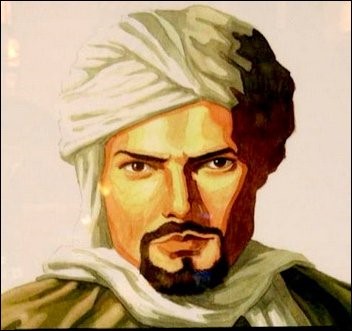
Ibn Battuta started on his travels when he was 21 years old in 1325. His main reason to travel was to go on a Hajj or the Pilgrimage to Makkah (Mecca), as all Muslims are instructed to do. But his traveling went on for about 29 years and he covered about 75,000 miles visiting the equivalent of 44 modern countries.
He met many dangers and had many adventures along the way. He was attacked by bandits, almost drowned in a sinking ship and was almost beheaded by a tyrant ruler on his travels!
Near the end of Ibn Battuta's own life, the Sultan of Morocco insisted that Ibn Battuta dictate the story of his travels to a scholar and today we can read translations of that story called "Rihla - My Travels". It is a valuable and interesting record of places which add to our understanding of the Middle Ages.
On the person of Ibn Battuta, Evan Andrews writes in History the following: [v]
“The title of “history’s most famous traveler” usually goes to Marco Polo, the great Venetian wayfarer who visited China in the 13th century. For sheer distance covered, however, Polo trails far behind the Muslim scholar Ibn Battuta. Though little known outside the Islamic world, Battuta spent half his life tramping across vast swaths of the Eastern Hemisphere. Moving by sea, by camel caravan and on foot, he ventured into over 40 modern day nations, often putting himself in extreme danger just to satisfy his wanderlust. When he finally returned home after 29 years, he recorded his escapades in a hulking travelogue known as the Rihla.
Born in Tangier, Morocco, Ibn Battuta came of age in a family of Islamic judges. In 1325, at age 21, he left his homeland for the Middle East. He intended to complete his hajj—the Muslim pilgrimage to the holy city of Mecca—but he also wished to study Islamic law along the way. “I set out alone,” he later remembered, “having neither fellow-traveler in whose companionship I might find cheer, nor caravan whose party I might join, but swayed by an overmastering impulse within me and a desire long-cherished in my bosom to visit these illustrious sanctuaries.””
19th Century
- Rifa'a al-Tahtawi (1801–1873) [vi], Egyptian traveler to France
Takhlis al-Ibriz fi Talkhis Bariz ("An Imam in Paris: Account of a Stay in France by an Egyptian Cleric (1826-1831)", 1834)
Tahtawi was born in 1801 in the village of Tahta, Sohag, the same year the French troops evacuated Egypt. He was an Azharite recommended by his teacher and mentor Hassan El-Attar to be the chaplain of a group of students Mohammed Ali was sending to Paris in 1826. Many student missions from Egypt went to Europe in the early 19th century to study arts and sciences at European universities and acquire technical skills such as printing, shipbuilding and modern military techniques. According to his memoir Rihla (Journey to Paris), Tahtawi studied ethics, social and political philosophy, and mathematics and geometry. He read works by Condillac, Voltaire, Rousseau, Montesquieu and Bezout among others during his sojourn in France.
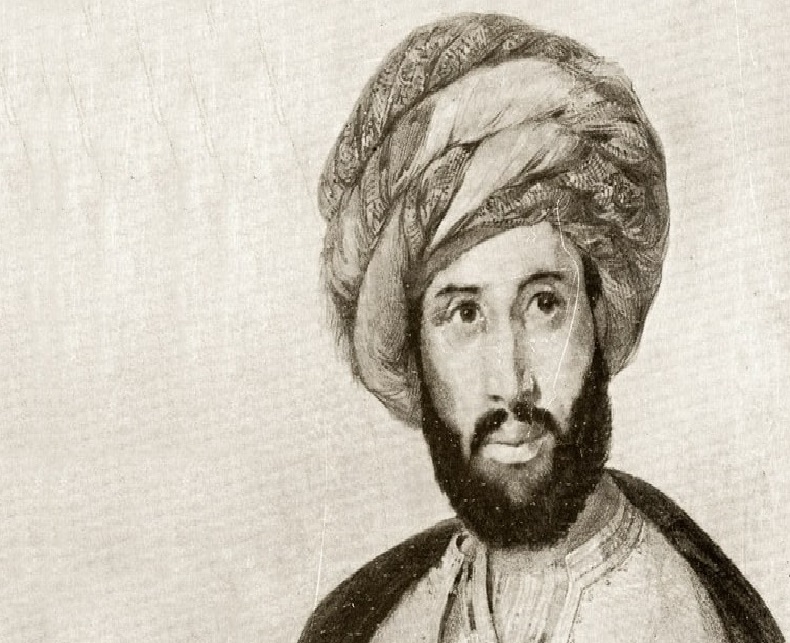
He was an Egyptian religious scholar trained in Islamic disciplines at al-Azhar by a shaykh sympathetic to the reform program of Muhammad Ali . Went to Paris as a religious teacher for the diplomatic mission there, gaining familiarity with European ideas. Helped develop a new educational system in Egypt and encouraged language instruction and translations. Worked to develop an intellectual framework for the integration of European and Islamic ideas, laying the foundation for Islamic modernist thought. Also laid the foundation for Egyptian nationalism.
Rifa'a al-Tahtawi was a writer, teacher, translator, Egyptologist and renaissance intellectual. Tahtawi was among the first Egyptian scholars to write about Western cultures in an attempt to bring about reconciliation and an understanding between Islamic and Christian civilizations. He founded the School of Languages in 1835 and was influential in the development of science, law, literature and Egyptology in 19th-century Egypt. His work influenced that of many later scholars including Muhammad Abduh.
On this enlightened Egyptian traveler of the 19th century, Barbara Winckler writes in Qantara an article entitled “France as a Role Model” on his travel experience in France: [vii]
“His book, with the virtually untranslatable title Takhlis al-ibriz fi talkhis Baris (The Refinement of the Gold in a Comprehensive Depiction of Paris), couched in the rhyming prose typical of the time, appeared in 1834. Ein Muslim entdeckt Europa (A Muslim Discovers Europe), as the title of the German translation has it, describes Tahtawi's impressions of Paris, where he lived from 1826 to 1831 as the imam of the first study mission sent by Muhammad Ali.
At the time Egypt was going through a period of transition. Napoleon's Egyptian expedition of 1798 and the following three years of occupation confronted Egypt with Europe's glaring superiority, above all in the military and technological spheres; it became imperative to catch up. According to the strategy, those who had studied in Paris could replace the French experts who had been imported for the purpose.
In addition, the largely secularized France was regarded as less "risky" for Muslims. After centuries of disinterest in a supposedly backwards Europe, Tahtawi's book was the first modern Arabic description of a European country. Written in an objective tone, it was meant to function as a practical travel guide, educating, uplifting and encouraging imitation.”
And goes on to talk about his fascination with the French culture and civilization and an idealized view of the French educational system:
“Much taken by French learning, the educational system and scientific achievements, Tahtawi often conveys an idealized picture in which "all the French" can read and write, own a library, and are passionate scholars. The republican political system is described positively, but the author also comments that Islam provides good arrangements as well.
Tahtawi, born in Upper Egyptian Tahta as the scion of a prominent family, was one of the pioneers of the nahda, the Arab Renaissance. His studies at Cairo's Azhar University, with its traditionally religious curriculum would hardly have seemed to predestine him for this role, though he did study geography, history, astronomy and the natural sciences even at that time.
Doubtless crucial for the further course of Tahtawi's development was his participation in the study mission, which, as for the other participants, laid the foundation for a subsequent career in the army or the administration.
It also proved fortunate that Tahtawi – unlike the other participants – was not delegated to a technical specialization and could instead devote himself to translating and reading a broad range of literature.”
From The West to the Muslim World
17th Century
Lady Mary Wortley Montagu (1689–1762) [viii] — known for the letters she wrote during several trips abroad, which were important for later female travel writers. These letters include:
Turkish Embassy Letters — letters describing her life as an ambassador's wife in Turkey, important as one of the earliest discussions of the Muslim world by a woman.
Montagu, Lady Mary Wortley, by birth Lady Mary Pierrepoint, was the eldest daughter of Evelyn earl of Kingston (afterwards marquis of Dorchester, finally duke of Kingston), by his wife the lady Mary Fielding, daughter of William earl of Denbigh, and was born at her father's seat of Thoresby in Nottinghamshire, about the year 1690. Displaying great attractions of person as well as sprightliness of mind from her earliest years, she was the favorite and pride of her father, who, having lost his wife in 1694, and continuing a widower, introduced his daughter to society, and made her preside at his table, almost before she had well outgrown her childhood.
In August, 1712, without the consent of her father, with whose views in regard to a settlement his son-in-law had refused to comply, Lady Mary married Edward Wortley Montagu, Esq., eldest son of the Hon. Sydney Montagu, and grandson of the first earl of Sandwich. Her letters to Mr. Montagu before their marriage, which have been published entire for the first time in the late complete edition of her works by her great grand-son, the present Lord Wharncliffe, prove that she had already attained much of that sharpness both of style and thought for which her writings are remarkable, as well as a maturity of judgment far beyond her years.
Between 1716 and 1718, Lady Mary Wortley Montagu accompanied her husband during his appointment as ambassador to the Ottoman Empire, travelling overland through Vienna, Belgrade and Adrianople, staying in Constantinople, and returning via Tunis, Genoa, and Paris. The Turkish Embassy Letters is a selection from the letters she wrote during that embassy; she worked on it during her lifetime but it was not published until after her death in 1762.
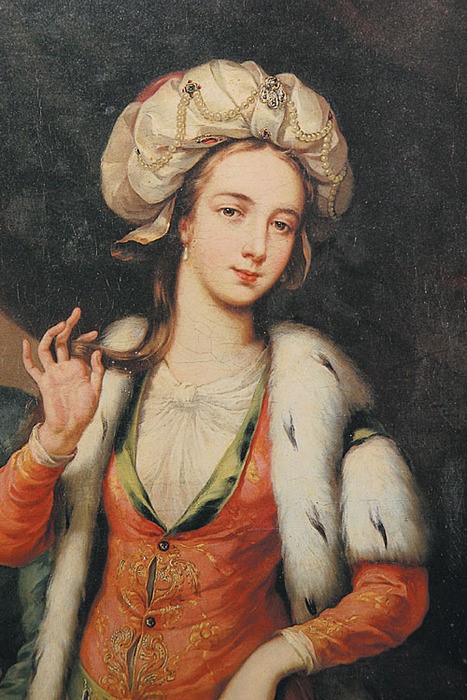
Lady Mary Wortley Montagu was described by a contemporary as "one of the most extraordinary shining characters in the world." Her letters, collected here, tell of her travels through Europe to Turkey in 1716, where her husband had been appointed Ambassador. Her liveliness makes them delightfully readable, and her singular intelligence provides us with insights that were exceptional for their time. Her ability to study another culture according to its own values, and to see herself through the eyes of others, makes Lady Mary one of the most fascinating and accomplished of early travel writers.
As the balance of power shifts from the Ottoman Empire to Europe following the Battle of Lepanto in 1571, despite the similarities in the subordinate positions of women in the East and West, the veiled woman becomes one of the most powerful symbols of the "irrationality" of Islam. The burgeoning industry of eighteenth- and nineteenth-century travel literature, which satisfied the desire for tales of the "exotic" East, reveled in stories of the oppressed veiled woman. These often "imaginary" accounts (men had no access to women's quarters) of the women of the Orient found expression in such works as Aaron Hill's A Full and Just Account of the Present State of the Ottoman Empire, Jean Dumont's A New Voyage to the Levant, John Covel's Early Travels in the Levant, and Robert Heywood's A Journey to the Levant. At once voyeuristic and indignant, these travel narratives distracted attention from the gender inequities at home, presented the Orient as a place in need of rescue and secured the idea of Europe as free, fair and civilized, supporting the role of the Empire. These narratives also allowed the male reader to vicariously experience the role of hero.
However, Lady Mary Wortley Montagu, one of the first female travelers in the Ottoman Empire, challenged these voyeuristic tales about Turkish women and their enslavement by insisting on the liberty of veiled women. In her Turkish Embassy Letters, she disrupts the pervasive orientalist discourse and the East/West divide by throwing into confusion the rhetoric of Western modernity and reason and Eastern barbarism and irrationality, at least as it is secured by the figure of the (un)veiled woman. In this description, Montagu invokes the tradition of eighteenth-century travel narratives that delight in imaginative descriptions of the abuse and enslavement of the oriental woman and "lament on the miserable confinement of the Turkish ladies" (134) but then shifts the gaze to her own imprisoned body.
Montagu's writing about Turkey counters the prevalent orientalist assumptions in the travel accounts of her day, which support empire building, and opens up a space where colonialist impulses are subject to critique.
On this distinguished lady traveler and Augustan age intellectual, Carolyn McDowall, writes in The Culture Concept Circle, in 2016 an article entitled “Lady Mary Wortley Montagu – Adventuress & Woman Of Influence”: [ix]
“The Turkish Embassy Letters of the Right Honourable Lady Mary Wortley Montague, written during her travels in Europe, Asia and Africa to persons of distinction, appeared in 1763, published the year following her death.
She had charged the Rev. Benjamin Sowden in 1761 when she was heading back to London following her husband’s death, to do with them whatever he decided and today they are the basis for her literary reputation.
Lady Mary had commented when reading the letters of Marie de Rabutin-Chantal, Marquise de Sévigné and asserted that ‘… without the least vanity, mine will be full as entertaining 40 years hence’.
They were a best seller and became a model for lively letter writing, inspiring and influencing sensibilities about what constituted an effective and entertaining personal letter.
Her description of life inside a harem would go on to influence the work of Orientalist painters, illustrators, and writers in the nineteenth century.
Would have loved to have read her diaries but her daughter burned them after she had died of cancer seven months after arriving home.
The Complete Letters of Lady Mary Wortley Montagu, 3 vol. (ed. Robert Halsband, published 1965–67) was the first full edition of Lady Mary’s letters published.”
19th Century
John Lloyd Stephens (1805–1852) [x]
Incidents of Travel in Egypt, Arabia Petræa and the Holy Land (1837)
Stephens, John Lloyd, traveler, born in Shrewsbury, Monmouth County, New Jersey, 28 November, 1805; died in New York city, 10 October, 1852. He was graduated at Columbia in 1822, and, after studying law at Litchfield, Connecticut, and New York, was called to the bar. He practiced his profession during eight years in the latter city, at the same time figuring occasionally as a public speaker at meetings of the Democratic Party, of which he was a warm supporter. His health becoming impaired, he undertook a journey to Europe for recuperation in 1834, and extended his travels to some parts of Asia and Africa along the Mediterranean. He wrote a series of letters describing his journey, which appeared in Hoffman's "American Monthly Magazine." When he returned to New York in 1836, he found that these letters had been the most popular feature in the periodical. This fact induced him to give a more detailed account of his travels, and he published "Incidents of Travel in Egypt, Arabia Pertain, and the Holy Land" (2 vols. New York, 1837.)
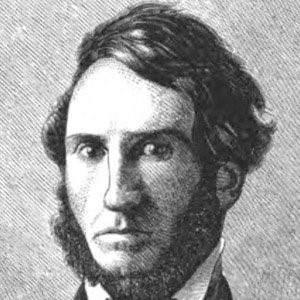
Perhaps the first modern travelogues still to capture the imaginations of armchair explorers, the mid-19th-century bestselling books of American diplomat and writer John Lloyd Stephens read like the most inspired of novels, their poetic immediacy placing the reader square in the saddle of adventure. In this classic 1837 work-which no less a critic than Edgar Allan Poe praised for its "freshness of manner evincing manliness of feeling"-Stephens takes the reader on an evocative journey through the Middle East, from a visit to the pyramids of Egypt to encounters with enthusiastic locals and much more, Complete with all the beautiful original illustrations by English artist and architect Frederick Catherwood (1799-1854), this delightful book continues to enthrall adventurous spirits today.
Conversational and unpretentious, the book is a delightful narrative of the author's year-long journey through the Middle East, incorporating detailed observations of such architectural marvels as the Pyramids, the temples of Karnak, the red-rock city of Petra and more, and offering charming accounts of a Turkish bath, how to catch a crocodile, the wardrobe of a Nubian damsel, a night in a tomb, the hospitality of the Arabs, desert horses, and Easter in Jerusalem.
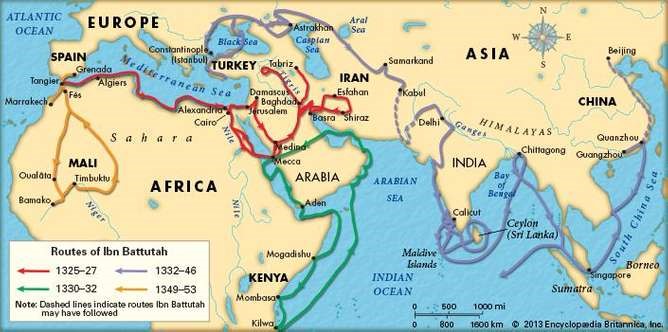
End notes:
[i] https://www.amazon.com/Innocents-Abroad-Wordsworth-Classics/dp/1840226366/
With an Introduction by Stuart Hutchinson. Who could read the program for the excursion without longing to make one of the party? So Mark Twain acclaims his voyage from New York City to Europe and the Holy Land in June 1867. His adventures produced The Innocents Abroad, a book so funny and provocative it made him an international star for the rest of his life. He was making his first responses to the Old World - to Paris, Milan, Florence, Venice, Pompeii, Constantinople, Sebastopol, Balaklava, Damascus, Jerusalem, Nazareth, and Bethlehem. For the first time he was seeing the great paintings and sculptures of the Old Masters . He responded with wonder and amazement, but also with exasperation, irritation, disbelief. Above all he displayed the great energy of his humor, more explosive for us now than for his beguiled contemporaries.
[ii] https://en.wikipedia.org/wiki/Ibn_Battuta
Ibn Battuta (or Ibn Baṭūṭah) (Arabic: محمد ابن بطوطة; fully ʾAbū ʿAbd al-Lāh Muḥammad ibn ʿAbd al-Lāh l-Lawātī ṭ-Ṭanǧī ibn Baṭūṭah; Arabic: أبو عبد الله محمد بن عبد الله اللواتي الطنجي بن بطوطة) (February 25, 1304 – 1368 or 1369) was a Muslim Moroccan scholar and explorer who widely traveled the medieval world. Over a period of thirty years, Ibn Battuta visited most of the Islamic world and many non-Muslim lands, including North Africa, the Horn of Africa, West Africa, the Middle East, Central Asia, Southeast Asia, South Asia and China. Near the end of his life, he dictated an account of his journeys, titled A Gift to Those Who Contemplate the Wonders of Cities and the Marvels of Travelling (تحفة النظار في غرائب الأمصار وعجائب الأسفار, Tuḥfat an-Nuẓẓār fī Gharāʾib al-Amṣār wa ʿAjāʾib al-Asfār), usually simply referred to as The Travels (الرحلة, Rihla). This account of his journeys provides a picture of medieval civilisation that is still widely consulted today.
[iii] https://www.famousscientists.org/ibn-battuta/
[iv] http://www.newworldencyclopedia.org/entry/Ibn_Battuta
[v] https://www.history.com/news/why-arab-scholar-ibn-battuta-is-the-greatest-explorer-of-all-time
[vi] https://www.britannica.com/biography/Rifaah-Rafi-al-Tahtawi
Rifāʿah Rāfiʿ al-Ṭahṭāwī, (born October 15, 1801, Tahtā, Egypt—died May 27, 1873, Egypt), teacher and scholar who was one of the first Egyptians to grapple with the question of adjusting to the West and to provide answers in Islamic terms.
Tahtāwī’s first important contact with the West occurred in 1826, when he went to Paris as a religious teacher to a group of Egyptian students there. After five years he returned to Egypt, and in 1836 he became head of the new School of Languages in Cairo. In 1841 he was placed in charge of a translation bureau, where he translated or supervised the translation of many books on history, geography, and military science. Under the khedive ʿAbbās I, who ascended the throne in 1848, Western influences were suspect, and Tahtāwī was sent to Khartoum (now in Sudan), where he taught school. On the succession of Saʿīd (1854), Tahtāwī returned to Cairo, where, among other activities, he continued his own scholarly work.
Tahtāwī saw the social order as being established by God and the ruler as God’s representative. He believed that the only limitations on the ruler’s authority were the dictates of his conscience. Although the people had no rights, the ruler should rule with justice and strive to foster their material well-being. The people in turn should conscientiously fulfill their duties as citizens, and the state should educate them to that end. Tahtāwī’s modernism lay in his conception of the material progress that could be possible within the framework of a harmoniously functioning government and society, achieved with the aid of Western technology.
[vii] https://en.qantara.de/content/rifaa-rafi-al-tahtawi-france-as-a-role-model
[viii] https://www.britannica.com/biography/Lady-Mary-Wortley-Montagu
Lady Mary Wortley Montagu, née Pierrepont, (baptized May 26, 1689, London, Eng.—died Aug. 21, 1762, London), the most colourful Englishwoman of her time and a brilliant and versatile writer.
Her literary genius, like her personality, had many facets. She is principally remembered as a prolific letter writer in almost every epistolary style; she was also a distinguished minor poet, always competent, sometimes glittering and genuinely eloquent. She is further remembered as an essayist, feminist, traveler, and eccentric. Her beauty was marred by a severe attack of smallpox while she was still a young woman, and she later pioneered in England the practice of inoculation against the disease, having noticed the effectiveness of this precaution during a stay in Turkey.
The daughter of the 5th Earl of Kingston and Lady Mary Fielding (a cousin of the novelist Henry Fielding), she eloped with Edward Wortley Montagu, a Whig member of Parliament, rather than accept a marriage that had been arranged by her father. In 1714 the Whigs came to power, and Edward Wortley Montagu was in 1716 appointed ambassador to Turkey, taking up residence with his wife in Constantinople (now Istanbul). After his recall in 1718, they bought a house in Twickenham, west of London. For reasons not wholly clear, Lady Mary’s relationship with her husband was by this time merely formal and impersonal.
[ix] https://www.thecultureconcept.com/lady-mary-wortley-montagu-adventuress-woman-of-influence
[x] https://www.britannica.com/biography/John-Lloyd-Stephens
John Lloyd Stephens, (born Nov. 28, 1805, Shrewsbury, N.J., U.S.—died Oct. 12, 1852, New York City), American traveler and archaeologist whose exploration of Maya ruins in Central America and Mexico (1839–40 and 1841–42) generated the archaeology of Middle America.
Bored with the practice of law and advised to travel for reasons of health, in 1834 he set out on a journey that took him through eastern Europe and the Middle East, where he was particularly drawn to many of the archaeological sites. Two popular books resulted, Incidents of Travel in Egypt, Arabia Petraea, and the Holy Land, 2 vol. (1837), and Incidents of Travel in Greece, Turkey, Russia, and Poland, 2 vol. (1838), with drawings by the English illustrator and archaeologist Frederick Catherwood.
Reports of the existence of ancient ruins in Central America and Yucatán stirred Stephens’ curiosity to locate and explore them. He obtained an appointment as U.S. chargé d’affaires to Central America through the influence of President Martin Van Buren, and in 1839, accompanied by Catherwood, he went to Central America, then torn by political upheaval and civil war. Their progress to Copán, Honduras, was imperiled first by local strife and then by the hazards and extreme hardships of travel through dense, dark jungle. At times they nearly despaired of finding what they sought, but their perseverance was vastly rewarded. After coming upon a wall of uncertain significance, they were stunned by the appearance of a magnificently carved stone stela (slab).
Other discoveries—more stelae, terraces, stairways, and walls with strange and fantastic ornamentation—came in quick succession. Stephens “purchased” the extensive site for $50, and work progressed in clearing away the jungle overgrowth. There and elsewhere, including Uxmal and Palenque in Mexico, Catherwood set about drawing the Maya remains. The report of the first expedition, Incidents of Travel in Central America, Chiapas, and Yucatan, 2 vol. (1841), and the subsequent publication of Catherwood’s superb drawings caused a storm of popular and scholarly interest and precipitated much study of earlier, mostly forgotten accounts of the lands of the Maya by Spanish conquerors and explorers.
After their second expedition, Stephens and Catherwood published Incidents of Travel in Yucatan, 2 vol. (1843), containing accounts of visits to the remains of 44 ancient sites. Stephens’ last years were devoted to directing the first American transatlantic steamship company and to developing a railroad across the Isthmus of Panama.
General bibliography:
Call Number: Z 6011 .C87; Publication Date: 1935-1949; 3 volumes
Call Number: G 222 .S5 1999; ISBN: 0810835541; Publication Date: 1999-02-04
American Travelers Abroad is a bibliography of travel literature published before 1900. Upon publication of the first edition in 1969, it showcased the importance of travel upon the notion of "national identity," and the impact of travel literature upon writing in America. The annotations summarize each title concisely and note significant features. An author index is organized by occupation and by the country visited.
Call Number: G151 .B865 2013; ISBN: 9781598849721; Publication Date: 2013-01-08
Successfully navigate the rich world of travel narratives and identify fiction and nonfiction read-alikes with this detailed and expertly constructed guide.
Call Number: Z6011 .R65 1990; ISBN: 0192122614; Publication Date: 1990-05-31
Whether medieval missionaries or modern mountaineers, butterfly-catchers or courtesans, the female travelers represented in this delightful collection share one thing in common: they all wrote books of their own. Robinson here presents some three hundred and fifty woman travelers, mostly British or American, and examines the almost one thousand books they produced among them. Spanning sixteen centuries, she reveals a fascinating body of literature, full of insight, wit, and courage.
Topics: Egypt, Ibn Battuta, Interfaith, Islamic Culture And Civilization, Literature, Morocco, Rifaa Al Tahtawi, Travel, Turkiye
Views: 2231
Related Suggestions

















